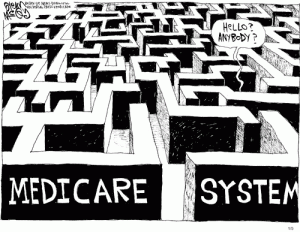By Steve Moran
There is a widely accepted belief that as the result of the aging boomer population, paired with the slowing of new development, in no time at all every senior living community in the country will be bursting at the seams with residents. And not only that, all of those communities will have massive wait lists, making occupancy worries a thing of the past.
I am a contrarian. There will be operators who will crush it — not because people have to move in due to limited choices, but because they are creating great living experiences for residents. There will be other operators who will continue to struggle because the experience they are creating is not that great.
Senior Living Alternatives
The other thing that is happening, because of costs and because so many people have a negative perception of senior living, is that people are hard at work figuring out other ways to create excellent living experiences for older people that are not senior living.
One of the sessions at LeadingAge California addressed the opportunities of home sharing, which is an alternative to traditional senior living. The session was presented by Angie Perone, the director at the Center for the Advanced Study of Aging Services at UC Berkeley, and Luke Barnesmoore, who leads Front Porch’s Home Match Program.
Home Sharing
Home sharing is primarily about helping older people who have housing stay in that housing longer by finding them roommates. When they take on a roommate, it solves for the older person one or more of these challenges (and it could be all three):
- The cost of housing
- The problems of loneliness and isolation
- The need for help with tasks around the home
For the one moving in, it can also solve the loneliness problem, but most often their primary incentive is economic, allowing them a place to live they could otherwise not afford.
What the Home Match programs do is match the two sides to the arrangement — but much more, they have tools to make sure the matches are compatible. They can also provide valuable resources, including mediation, if things go wrong.
Worth Considering
It turns out that in most programs, there are more people looking for roommates than roommates looking for places to live. This could be a huge opportunity for the senior living workforce. Imagine your single frontline staff being able to move into a nice home or apartment at a fraction of the cost they would otherwise have to pay.
Most, maybe all, home share programs avoid having the one moving in doing ADL care because of the potential liability problems.
It is a program that is almost limitless in possibilities and with few downsides.










